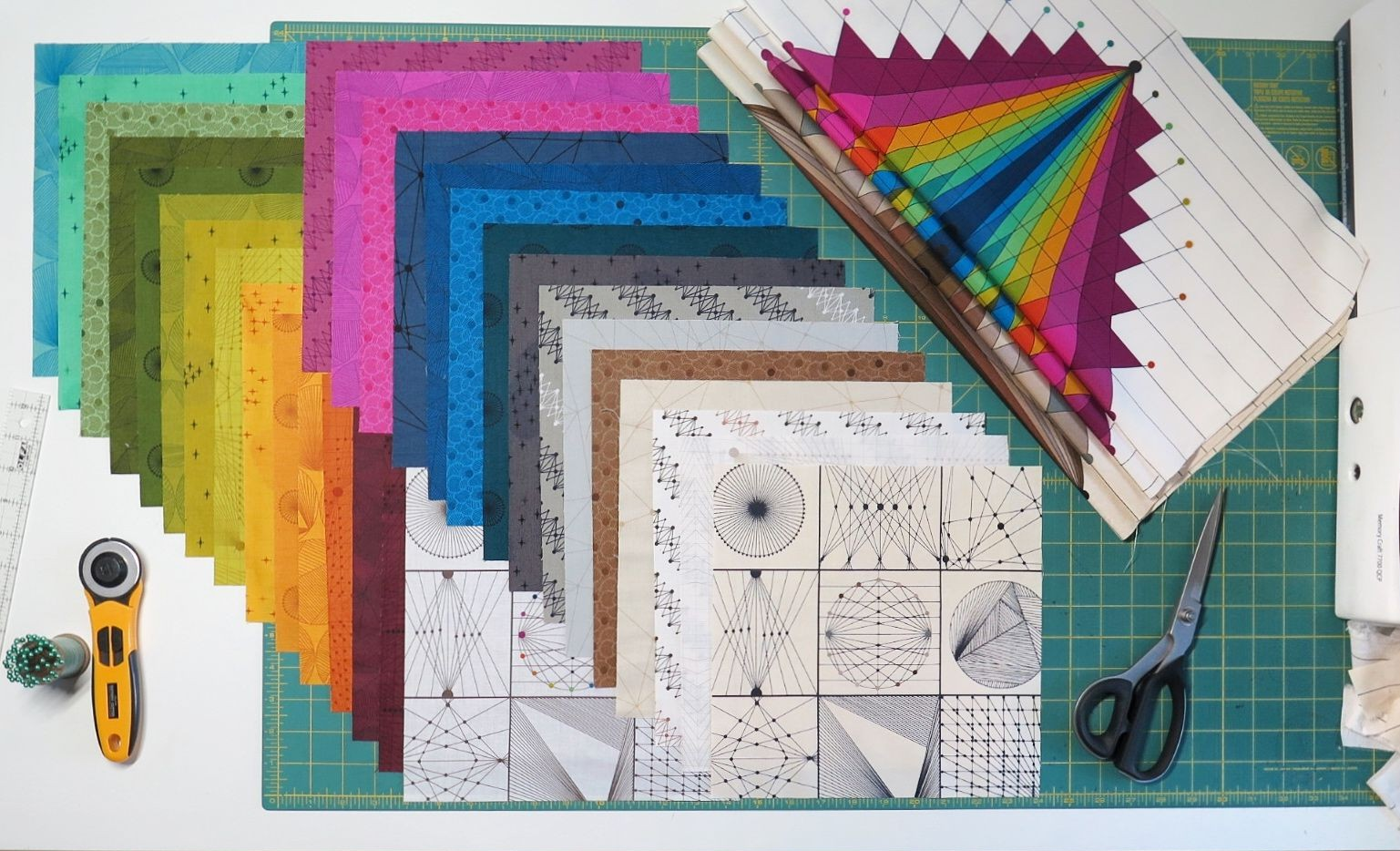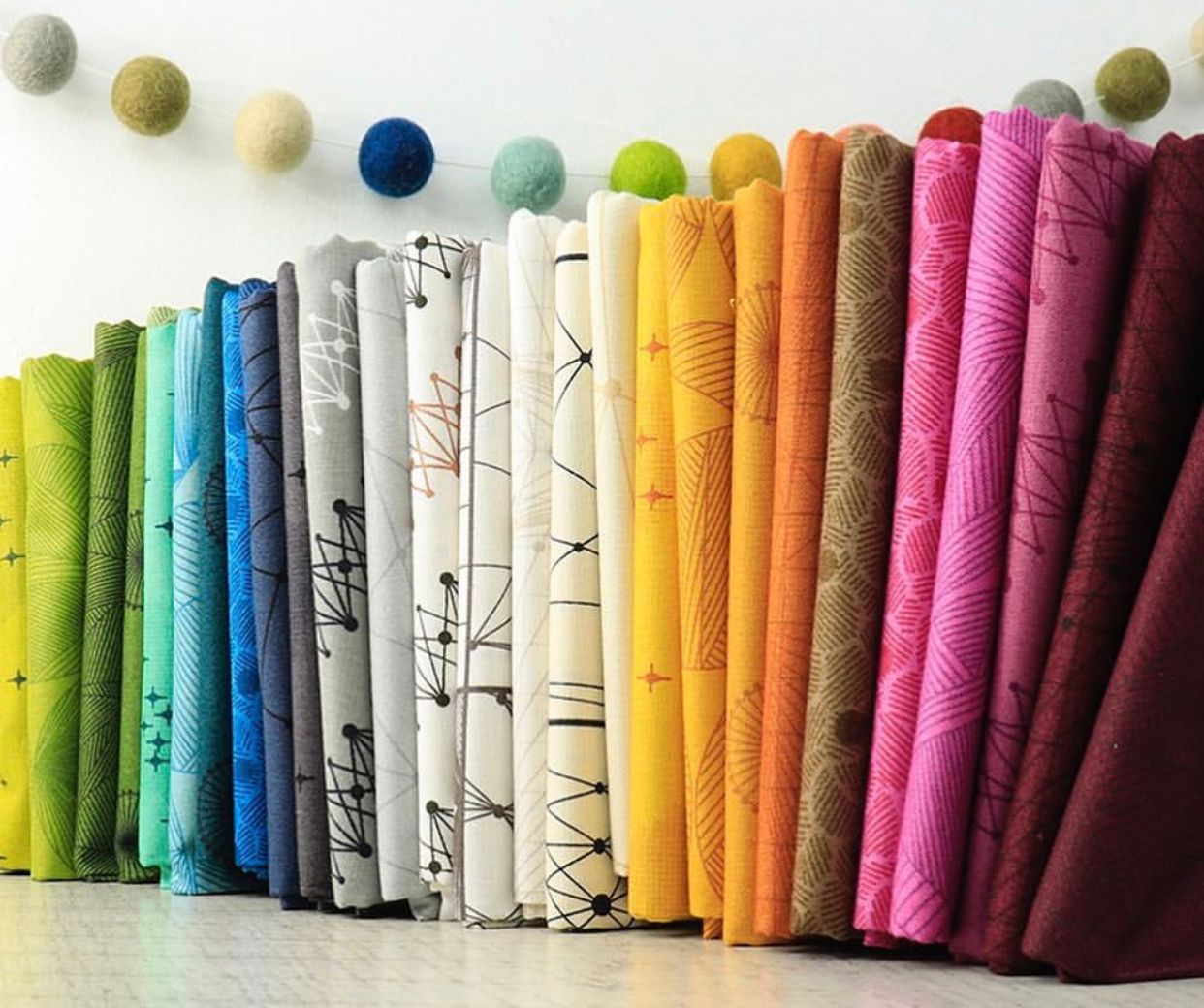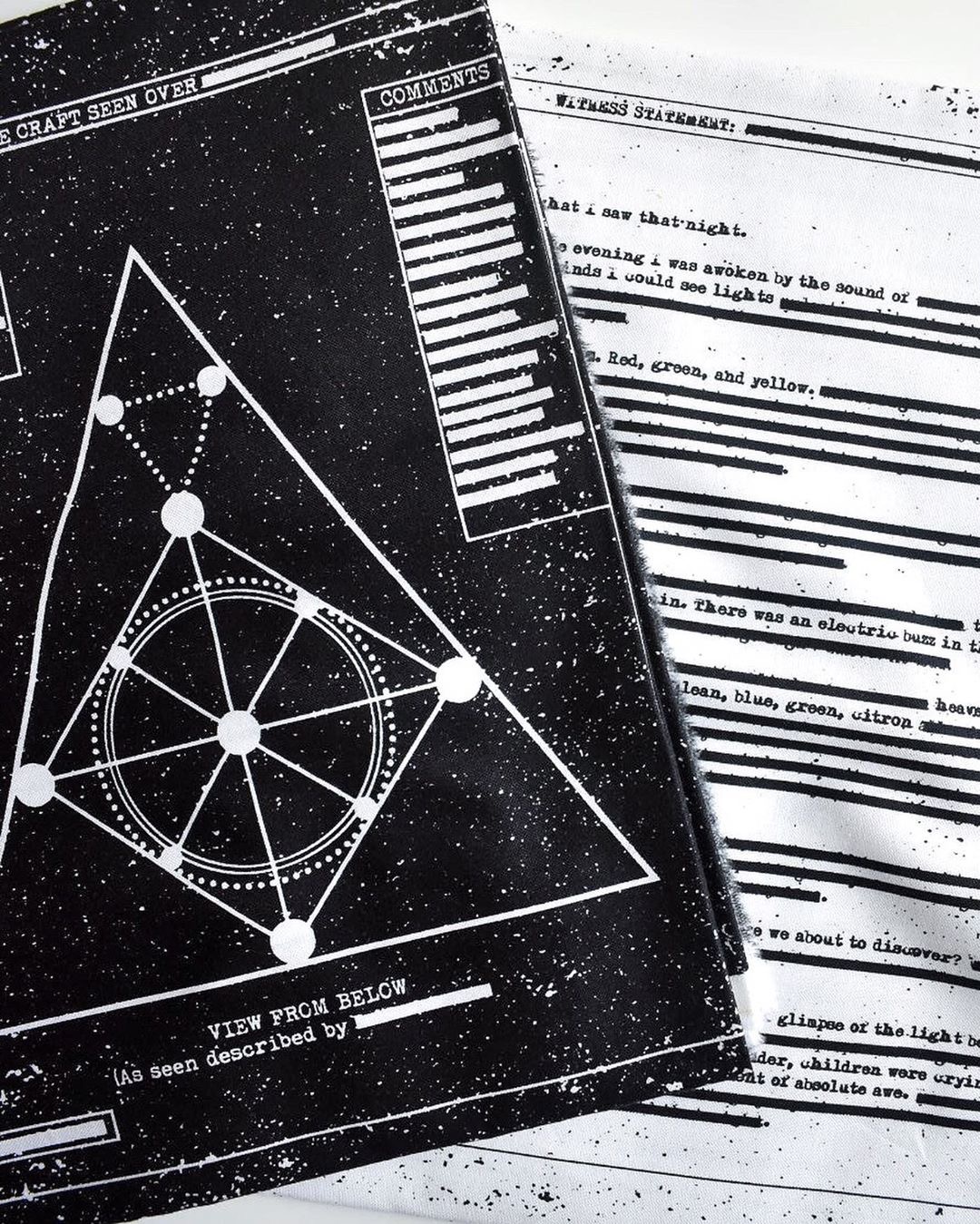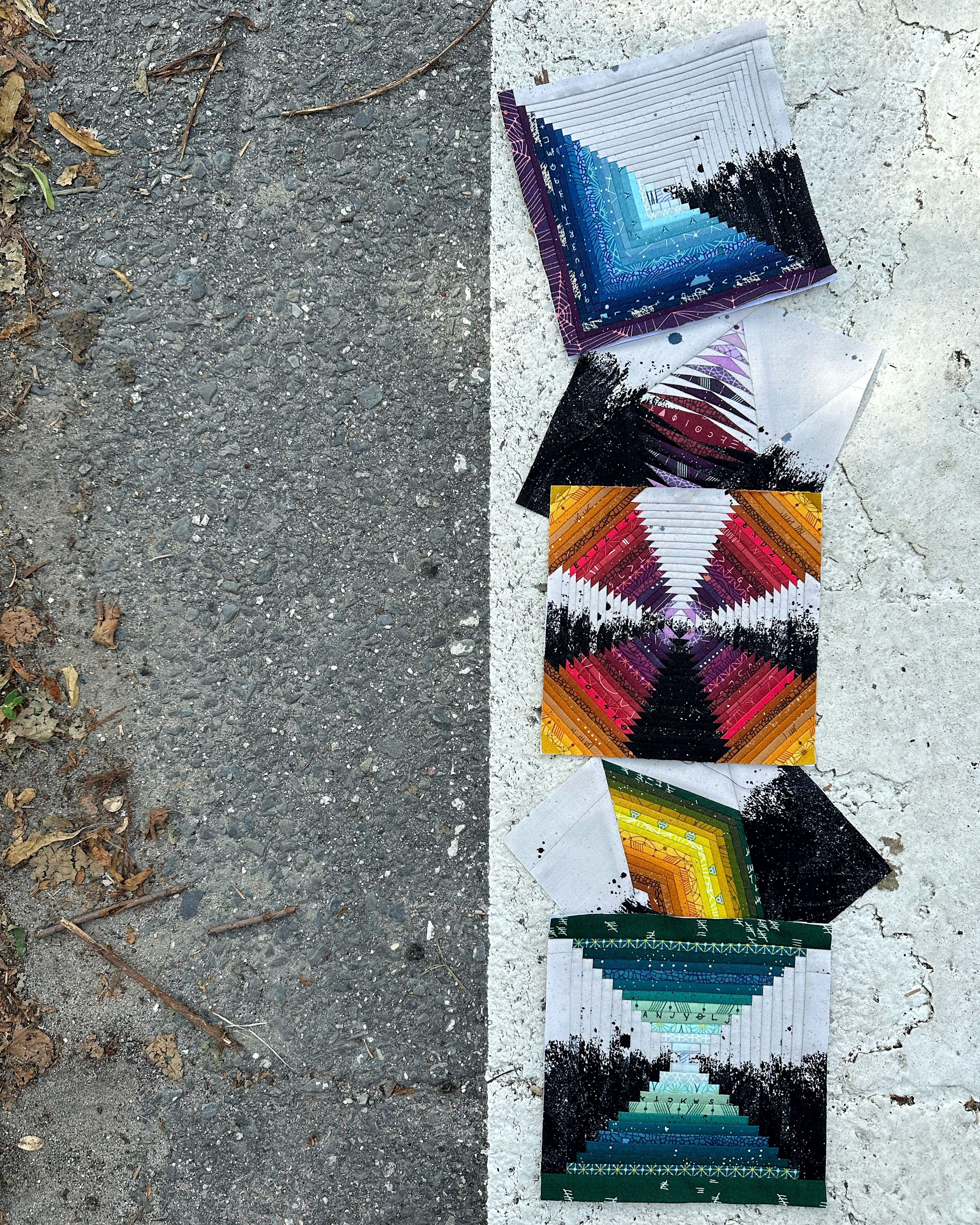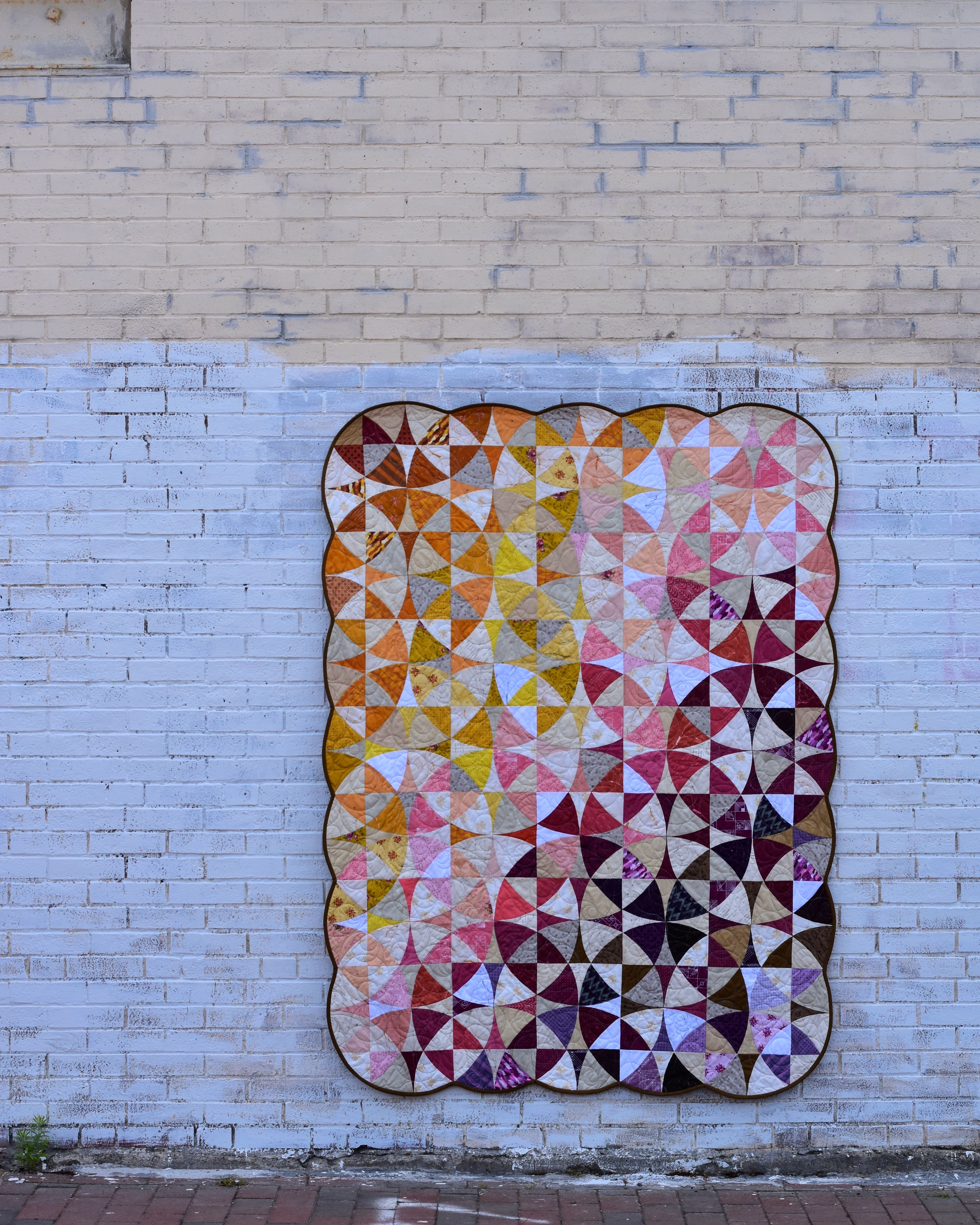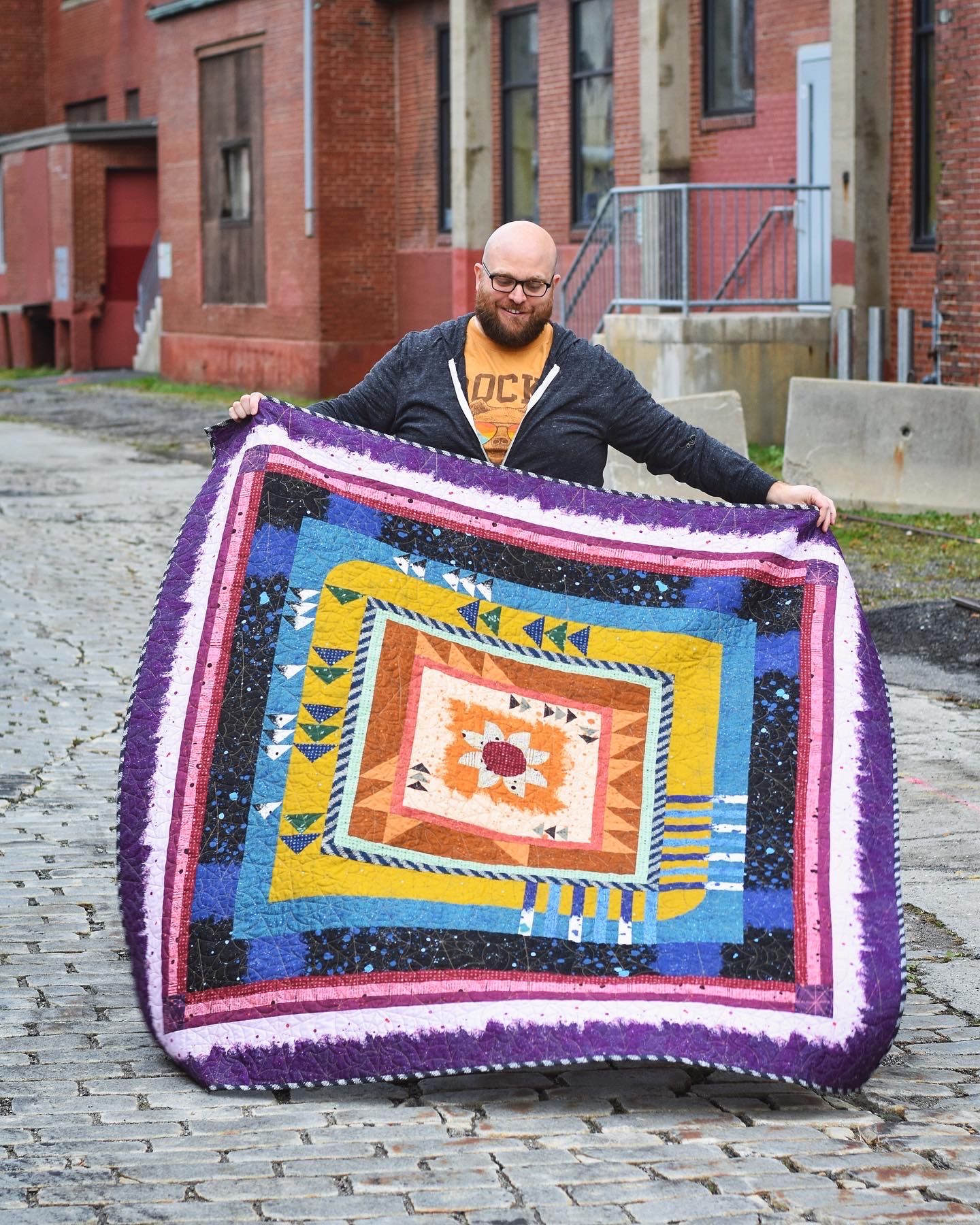Quilting is not a traditional Sicilian craft, yet it's part of Sicilian American quilter Giuseppe Ribaudo's heritage. Threads tie him to Casteldaccia, Sicily, where both sets of his grandparents came from, and West Babylon, New York, where he grew up downstairs from his seamstress maternal grandmother. At the side of her machine, he was first exposed to needlework. He'd watch her sew and mend clothing while his parents worked at his father's restaurant. But he never saw garment sewing as his thing. It wasn't until college that Giuseppe again picked up the needle and embraced another type of sewing: quiltwork.
In all good quilts, each piece of fabric tells a story. But the stories have been a little different for Giuseppe (aka Giucy Giuce), with some tapping into the fantastic like his sci-fi series and others more lurid like his true-crime collection. And then there's his Nonna series, inspired by the decor of his grandmother's home, where he enjoys Sunday suppers to this day.
I recently spoke with Giuseppe, who shared more about his grandmother, influences, and unique spin on the craft.
Tell us about your grandmother.
I always say my grandmother was the first feminist I ever knew, and I don't think she even realizes that she is one or was one. She worked at a clothing factory in Long Island. She was by far the most proficient of everybody who was there.
How have your Sicilian roots influenced you?
My culture has taught me to be really creatively free. I learned a lot from my father, who is a chef. I learned how to cook from him. I've been cooking with him my whole life. I model a lot of how I approach my craft on how my father approaches cuisine. A love of food, a love of presentation, and a love of detail really influenced my work ethic. My father taught me at a really early age to think outside the box. I don't know where that really came from, but it's something that I feel was ingrained in me at a really young age. I could look at things through an American lens and a Sicilian lens at the same time, so I looked at things differently when I thought about how my family looked at them.
Quantum by Giuseppe Ribaudo
Describe your first collection, Quantum.
It's a little weird, but it was like a math professor or science teacher who always longed to be an artist. The collection was what that professor would draw and doodle in his journal or sketchbook between grading papers and things like that. And it was like that for me, too. I had wanted to design for a while.
My relationship with the fabric company I was working for at the time began with me pitching a fabric collection to them, and then they hired me. I took the opportunity to soak in as much as I could, but I always had this thing in the back of my mind of what I wanted to be doing. And so that collection really began to mold what my aesthetic would end up being, what I liked, and what I was drawn to literally and figuratively in my designs.
There was stuff inspired by DNA strands, and there's this one print called "Petri" that was supposed to be a graphic visual of different samples and Petri dishes and things like that. It was just very mathematical and geometric. I wanted to do line-drawing versions of these scientific ideas I had heard about and learned about throughout my life.
It's very geometric, and the colors are very tonal. That's still very much part of my work and what I do. My fabrics are designed as tools for the quilts that I create. I'm always thinking of my color palette and adding colors to the broader palette of all of my fabrics.
Quantum fabrics by Giuseppe Ribaudo
How has your process evolved?
It's evolved quite a lot. I don't have any formal design training at all, so I'm constantly thinking of an idea and how to translate that. The thing that's been really fun for me as a designer is no two collections have ever been created in the same way because it's always just trying to come up with a creative way to be able to translate the image that I have in my head—whether it be a file on the computer or something hand drawn. I'm always trying to figure out creative ways of making it happen. I have a true-crime collection that I did a couple of years ago. It consists of all these random little elements that I drew and scanned.
That's why it's continued to be an exciting job for me. I never go into a collection theme without any idea how I will create the end of the artwork. I daydream a lot. I don't sketch much; I write in a journal and list my ideas. So I'll have a theme for a collection, and if I have an image, I'll just write down a word that's descriptive of that image. And if every time I look at that word, that image comes back, then I feel like I'm onto something with it. I'm very cerebral about it, and then it's like, "The artwork is due in two weeks; it's time to actually get to work on the collection!" And then I'll sit down and actually start working all out. Sometimes, it'll be half done by hand or half on the computer—whatever way gets the work done. But it's always different, which is really fun as a creative person because it always feels fresh.
Declassified by Giuseppe Ribaudo
Some of your fabrics display text. Can you speak to that?
I do a lot of writing, and I love words and text. People love text prints, so I do a lot of those. I have a collection called Declassified, which is about the government conspiracy to cover up the existence of extraterrestrials. That collection has documents and written testimonials that I synthesized from lots of reading about alien encounters. I wrote them all out, turned them into my own versions of their stories, and then redacted a bunch of information.
Giuseppe Ribaudo's true-crime series, The Gnarls Hollow Trilogy
You enjoy taking people along on your explorations and research.
For sure. I always try to reveal a little bit more about myself as a person outside of the quilting world with each collection. I've done collections before where it was like, "I'm going to do this because it feels like it will be a home run. It feels like people will want it." And those never perform as well as those that really feel like they're authentically something I actually care about and am interested in. For example, the alien one is something I've always been super interested in, and I have stories of encounters. Sci-fi has always been a big inspiration for me, as has true crime. I've always been kind of morbid. I'm a relatively cheerful person, but I've always had this dark bent on what interests me. We have all these different sides to ourselves.
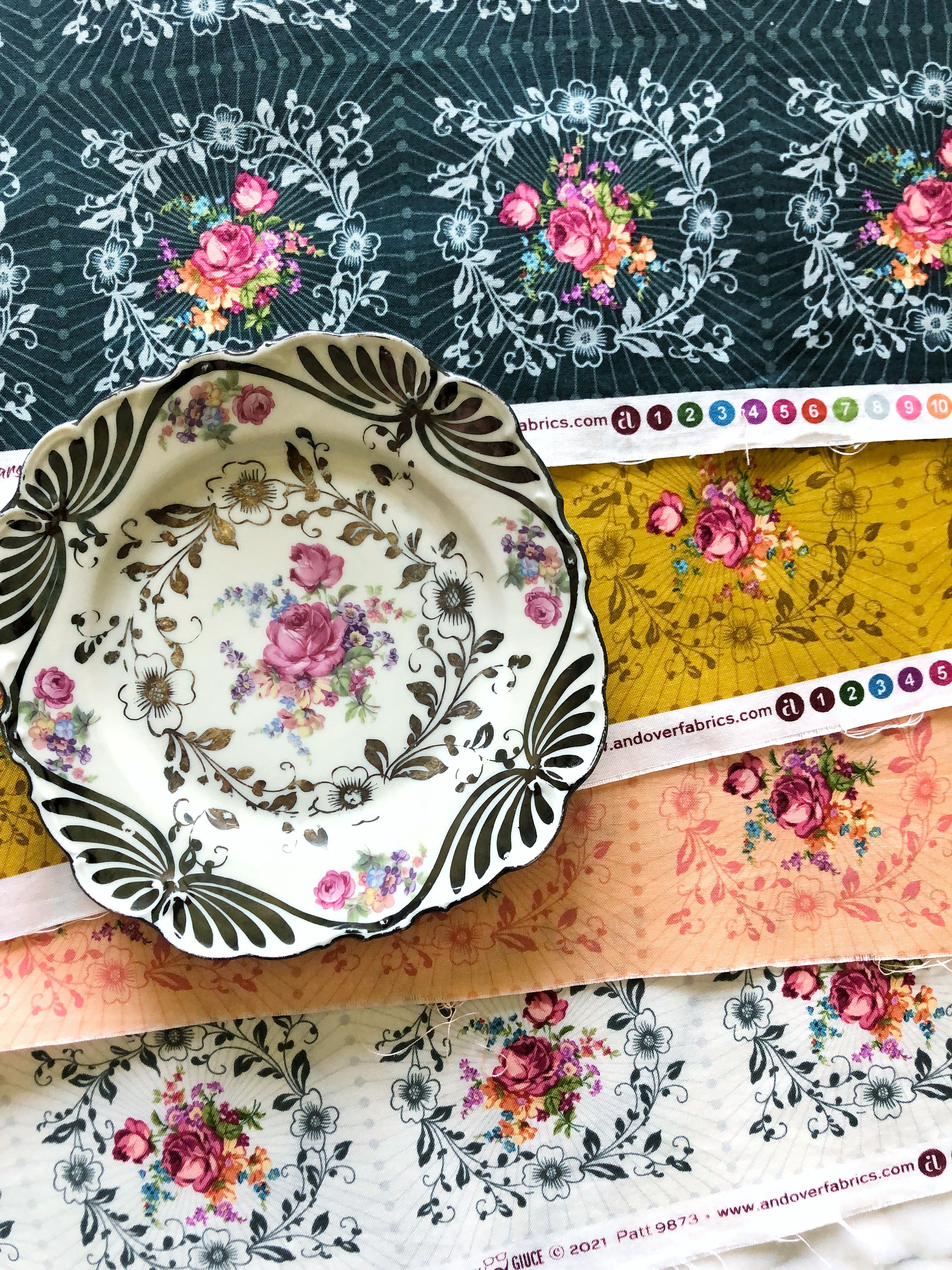
Giuseppe Ribaudo's Nonna
Tell us about your Nonna collection.
It was my most personal collection, and it's also my most successful collection. Every element was so specific and personal, and every element had a story behind it. From that collection, I learned that if you have the impulse and the instinct to be personal and make it specific, you should go for it because people will be receptive to that.
That collection also hit at the right time—during the pandemic. A lot of people were feeling really nostalgic for better days. I had also moved to Maine (I'm now back in New York), and I hadn't seen my grandmother in seven or eight months. I'm a good Sicilian boy who goes to my grandmother's house every Sunday for dinner. So it was really, really hard to be away from my grandma for that long.
At that time, you had to be careful about who you were exposed to, and you were getting tested before you went to people's houses. We packed up the apartment, and I knew I couldn't move to Maine without saying goodbye to my grandmother. So we got our tests again.
We went to see my grandmother, and we were having dessert. My grandmother had these beautiful dessert plates, and when she pulled them out, you knew that we were having something special for dessert. So she pulled out these plates, and I was looking at them. I've always loved them. They have this beautiful little cluster of flowers.
I was like, "I would just love to have something like this on fabric. I would just sew with this all day long." Then I turned around and looked at my grandmother's couch with its floral design on it. I thought, "I wonder if there's a fabric collection here."
It hit at exactly the right time. It was what I needed to work on when I left New York. It felt like I was still tethered to home in that way, especially during such a hard time. So, I had the print for the main floral, and the dessert plate turned into its own print. There were these little clusters of flowers that turned into their own print. My grandmother has this huge piece of furniture, a big radio record player thing, and the speakers are lined with this beautiful green and yellow tweed. So, the tweed turned into a print from the collection.
I blended these very personal, specific things from her house. The idea was mashing up my grandmother's aesthetic with my aesthetic. I wanted it to feel very traditional, but I wanted to bring it into the 21st century and make it feel very now. So, I combined my grandmother's florals and very traditional designs with my geometric symmetrical sorts of things. And it's up there in the best work I've done.
I remember the first time I showed it to her. I had talked to her ad nauseum about this collection, and I didn't realize that the whole time I was talking to her about the collection, she was designing a collection in her mind. I told her, "I used your plate to design this. I used your couch to do this." So, in her head, she was picturing what that fabric looked like. And so I remember when I actually showed her the fabric, she had this look on her face: What the hell is this? Because it was not what she had envisioned. She thought it was going to be the soft pinks in her house and the creams and all this, but it was bright yellow and navy blue. It was my colors. She was really confused. Then I laid it all out and showed her the quilts that went with it, and now, she really gets it.
Giuseppe Ribaudo's Winding Ways
What do you hope people take from your work?
I try really, really hard to do something different, make it my own, and make stuff for people who may not want to work with a painterly floral all the time. There's space in my industry for the people who are sci-fi geeks and for those who like geometric stuff more than they like flowers and things like that.
I'm not breaking new ground. I'm taking the same things that have been there before, but playing with them a different way. So they're text prints, but instead of just being regular text, there's the weird alien sci-fi side to it. They look different than what you're used to.
I'm very fortunate that I have fabric in shops in Australia, Norway, and all of these places. I take that responsibility really seriously, and I really hope that people see that. I try to push it further. I try to make it so that you're getting something new and different because I'm different.
And so if I was just trying to do more of the same, I don't think I'd still be doing this. Because in the most authentic collections, those are the ones where I've really found the most success. And so I hope that people see that I am trying to do my own thing and that I hope that that inspires other people to do their own thing. We don't have to do everything the way it's always been done.
Giuseppe Ribaudo with Basement
If you enjoyed this article, consider subscribing to my newsletter for more content and updates!

